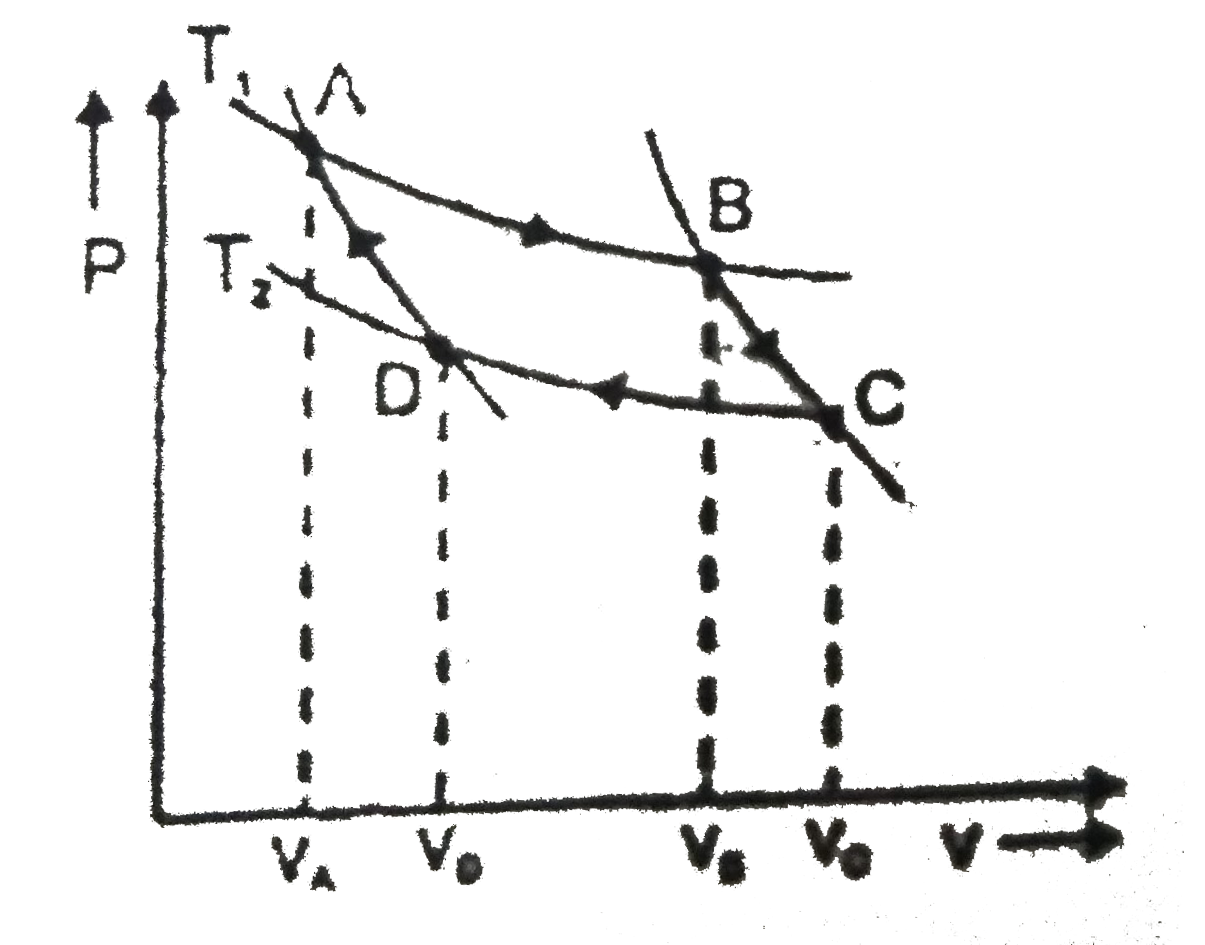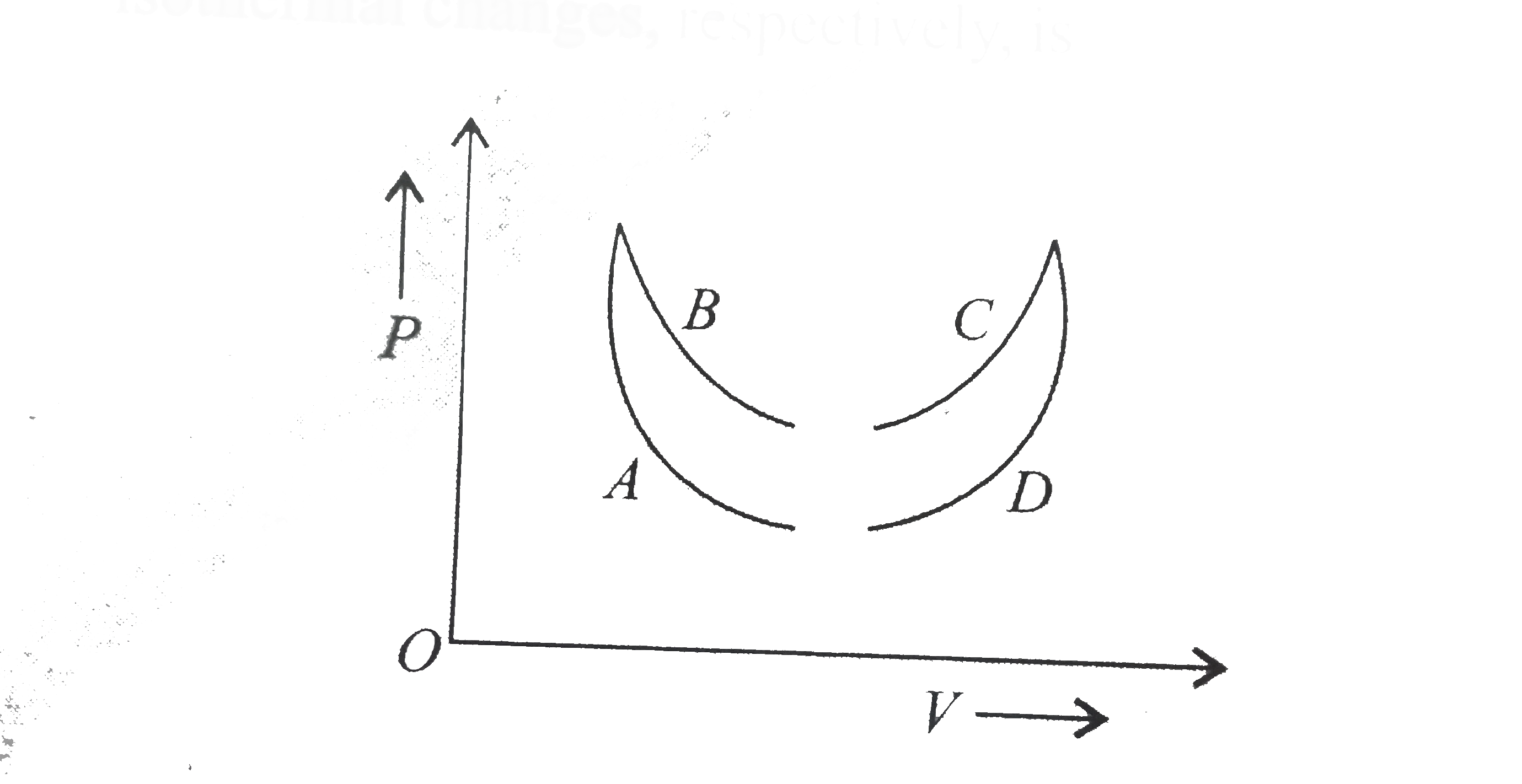In the given graph, adiabatic and isothermal curves are shown. Then,

the curve A is isothermal
the curve B is isothermal
the curve A is adiabatic
the curve B is adiabatic
The correct Answer is:b,c
Step by step video, text & image solution for In the given graph, adiabatic and isothermal curves are shown. Then, by Physics experts to help you in doubts & scoring excellent marks in Class 11 exams.
Updated on:21/07/2023Topper's Solved these Questions
- LAWS OF THERMODYNAMICSBook:BITSAT GUIDEChapter:LAWS OF THERMODYNAMICSExercise:16
Explore 1 Video
- LAWS OF THERMODYNAMICSBook:BITSAT GUIDEChapter:LAWS OF THERMODYNAMICSExercise:17
Explore 1 Video
- LAWS OF THERMODYNAMICSBook:BITSAT GUIDEChapter:LAWS OF THERMODYNAMICSExercise:14
Explore 1 Video
- HEAT, TEMPERATURE AND CALORIMETRYBook:BITSAT GUIDEChapter:HEAT, TEMPERATURE AND CALORIMETRYExercise:Bitsat archives
Explore 9 Videos
- MAGNETOSTATICS Book:BITSAT GUIDEChapter:MAGNETOSTATICS Exercise:BITSAT Archives
Explore 8 Videos
Similar Questions
Knowledge Check
The ratio of slopes of adiabatic and isothermal curves is
AγB1γCγ2Dγ3An ideal gas undergoes a process consisting of adiabatic and isothermal process only as shown in the figure. Then :
 AT1<T2BVAVC=VBVDCwork done by the gas in process will be negativeDefficiency =WAB+WBCQAB
AT1<T2BVAVC=VBVDCwork done by the gas in process will be negativeDefficiency =WAB+WBCQABThe reversible expansion of an ideal gas under adiabatic and isothermal conditions is shown in the figure. Which of the following statement(s) is (are) correct?
 AT1=T2BT3>T1Cwisothermal>wadiabaticDΔUisothermal>ΔUadiabatic
AT1=T2BT3>T1Cwisothermal>wadiabaticDΔUisothermal>ΔUadiabatic
Four curves A,B,C and D are drawn in figure for a given amount of gas. The curve which represents adiabatic and isothermal changes, respectively, is

View SolutionExpalin the difference between :
Adiabatic and isothermal process
View SolutionWhich of the following statements is true about the indicator diagram of adiabatic and isothermal processes?
View SolutionStatement-1: Temperature of a system can be increased without supplying heat.
Statement-2: If the initial volume of system is equal to final volume in a process then work done is necessarily zero.
Statement-3: If an adiabatic curve for a gas intersect with an isothermal curve for the same gas then at the point of intersection, the ratio of slope of the adiabatic and the isothermal curve is γ.
View SolutionA gas may expand either adiabatically or isothermally. A number of p−V curves are drawn for the two processes over different ranges of pressure and volume, it will be found that
(i) Two adiabatic curves do not intersect
(ii) two isothermal curves do not intersect
(iii) an adiabatic curve and an isothermal curve may intersect.
(iv) the magnitude of the slope of an adiabatic curve is greater thanthe magnitude of the slope of an isothermal curve
View Solution

